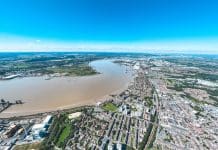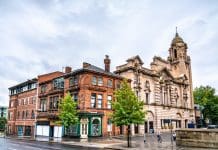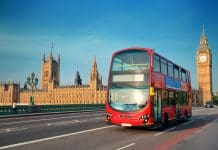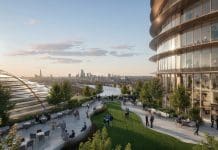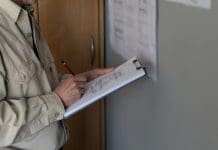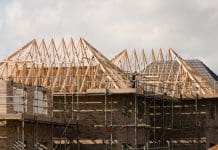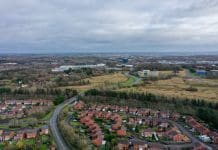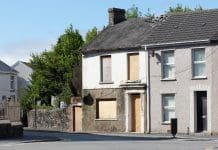Planning for a housing development in South London has been granted despite the council being warned that residents on the first floor could be at risk from high levels of air pollution
The controversial development approved by Lewisham Council is located in a highly polluted area on the A2209 road by Deptford Creek. As the development is located within an Air Quality Management Area, an Air Quality Assessment report was carried out on behalf of the developers in April 2018 as required by current planning policy. This report is based on the potential impacts of existing and future traffic levels on the residential elements of the proposed development.
The report conducted air quality modelling for nitrogen oxides (NOx) and particulate matter (PM10) for two scenarios including the existing levels of air quality for 2016 and the predicted concentrations of the future impact of traffic emissions based on the proposed development.
The results of the predicted NO2 concentrations for 2016 and 2021 indicate that concentrations of NO2 would exceed the current EU air quality standards of 40 µg/m3 (under Directive 2008/50/EU) at the first floor of the development, with concentrations predicted to reach up to 44 µg/m3.
Under the recently updated National Planning Policy Framework (NPPF 2018), planning policy should prevent new and existing developments from contributing to, being put at unacceptable risk from, or being adversely affected by unacceptable levels of air pollution. However, given the approval of this application, it would appear this is not often the case.
While the development was allowed to go ahead and it would appear that no formal mitigation measures were put in place to reduce air pollution exposure, a planning condition was placed on the application that required that all occupants located on the first floor would be made aware of the potential health risks associated with the high levels of pollution.
The recommendation outlined to the developers within the air quality report stated, “the developer should advise the future occupants that their health could be at risk due to relatively high levels of air pollution in the area. Such exposure can be avoided if windows are closed when the local roads are heavily trafficked, such as during the morning and afternoon rush hours, or during other high polluting episodes (e.g. long periods of high pressure) and that these are the periods when the mechanical ventilation system could be used.”
Despite the increasing pressure on Local Authorities to improve air quality in the UK, residential developments continue to be approved in areas of high levels of air pollution, undermining current local drives for improvement in areas like Lewisham.
The high levels of NO2 pollution at the development are known to cause numerous health impacts including increased likelihood of respiratory problems, heart disease and diabetes. Traffic-related pollutants like NO2 and PM10 are also known to be directly linked to the development and severity of asthma, with a recent study suggesting that 19% of childhood asthma cases are caused by air pollution from traffic.
It’s a sad fact that thousands of people continue to die prematurely from living in areas of poor air quality. In my view, breathing clean air should not be a privilege.
Air pollution is a multi-faceted issue and in order to successfully reduce air pollution emissions and reach EU targets, planning policy must be modified to include stricter guidelines to ultimately ensure that developments situated in areas of illegal air pollution are not permitted.
https://www.argyllenvironmental.co.uk/reports/air-quality
Lizzie Murray-Clark
Environmental Consultant BSc (Hons) MSc
Argyll Environmental
Twitter: @argyllenviro
LinkedIn: Argyll Environmental



